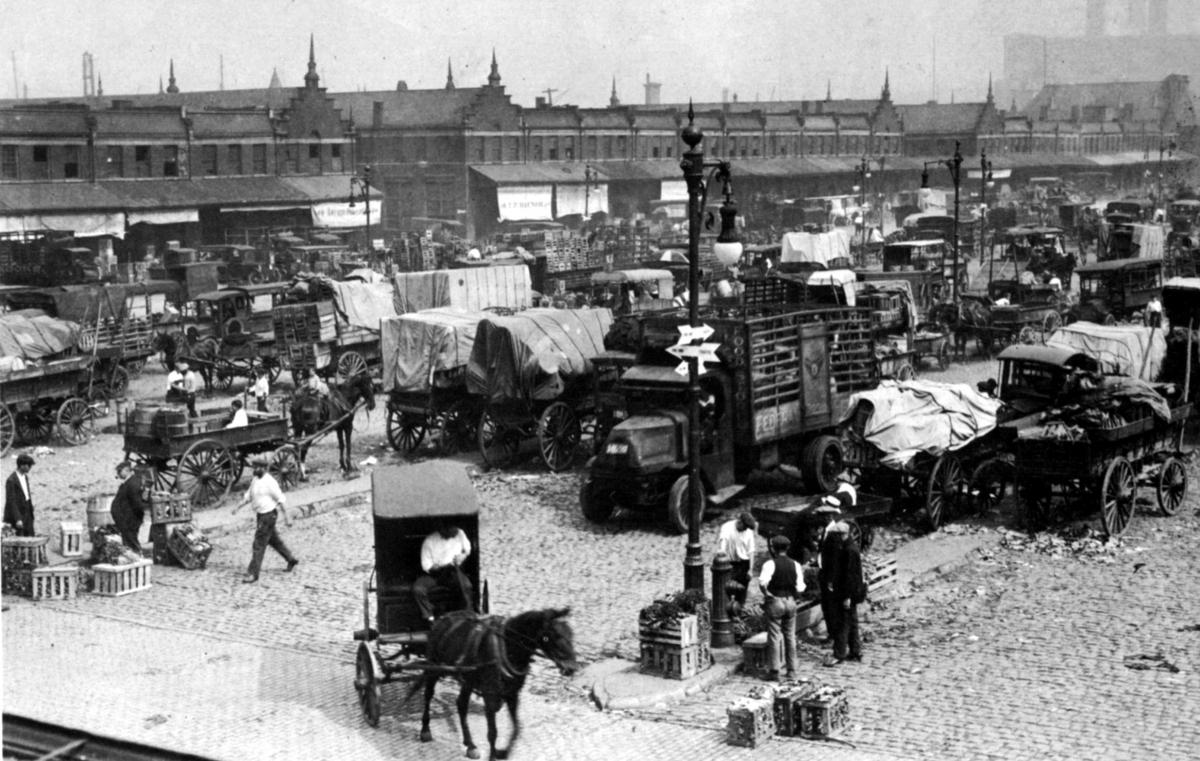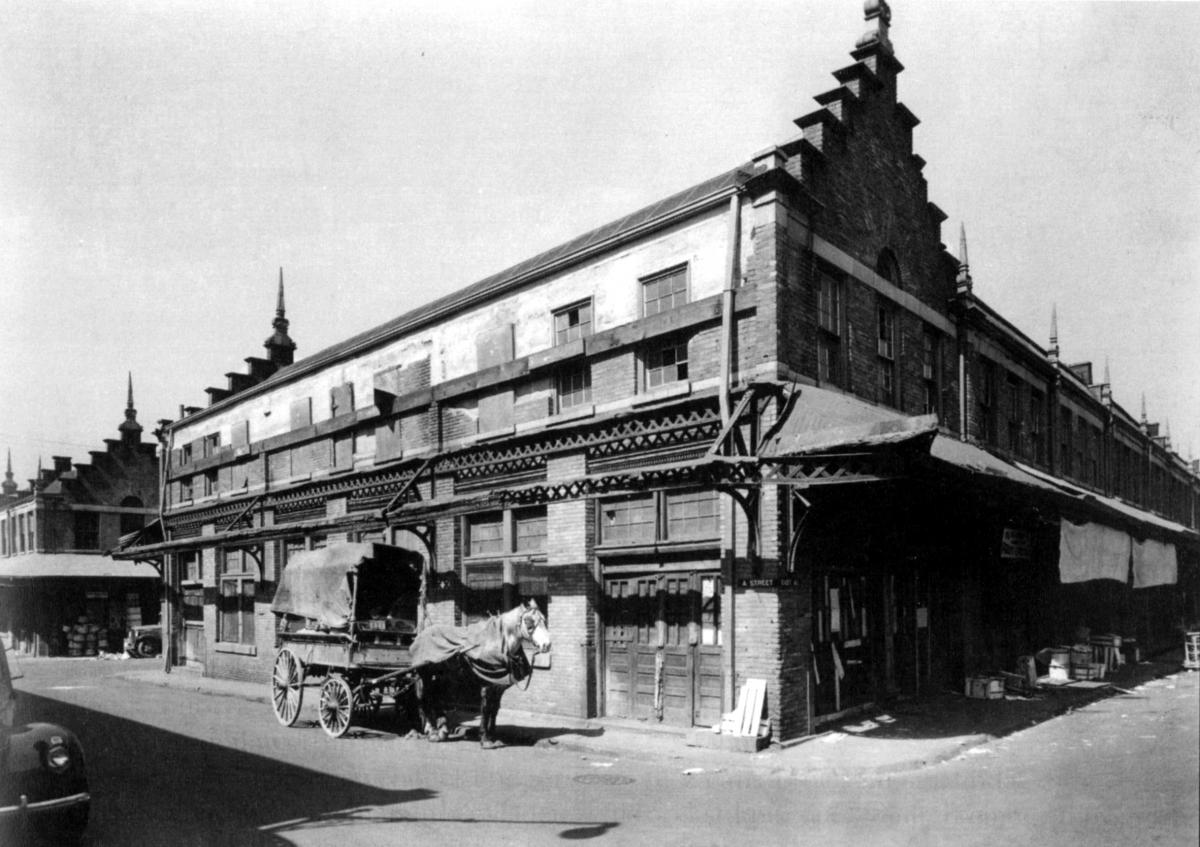On This Day in History, April 20: ‘To Market, To Market…’

Springtime sees the return of many outdoor markets in Brooklyn, such as the popular Brooklyn Flea coming back to Fort Greene on Saturdays. The season also sees an increase in the bounty at our local farmers markets. But, even so, they are no match for the Wallabout Market, pictured above in 1920. It adjoined the Brooklyn Navy Yard on its northeastern side.
The market operated from 1884 until the outbreak of World War II, when the government re-acquired the site to be used as a dry dock.
The market attracted farmers from all over Long Island, who before had to cross the East River to Manhattan to sell their goods. There was for years a fuss over the need for a “first class public market”in Brooklyn. Brooklynites were baffled as to why these farmers should ride their wagons right through their city of half a million people and cross to Manhattan only to sell their wares back to Brooklynites. “How very absurd…to buy in New York the very produce that passed their doorways,” a member farmer of the Wallabout Market Association remarked in the 1880s.